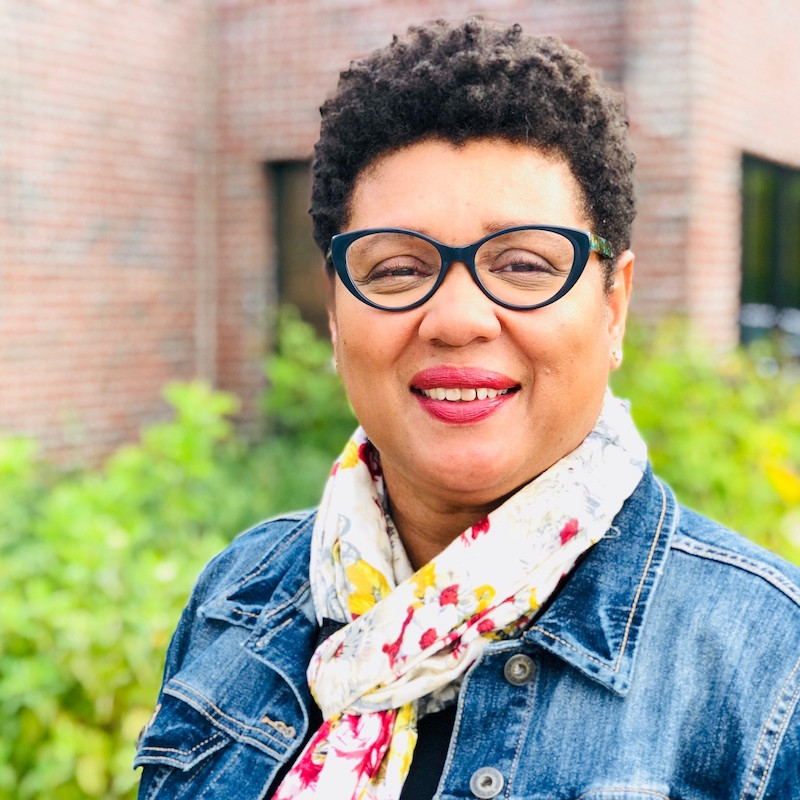Alumna helps empower others through career in dispute resolution

It took being the unofficial mediator at a small organization among her colleagues for Belinda Dulin, B.A. ‘93, M.A.D.R ‘98, to think she might have a future in dispute resolution.
“In an unskilled way, I began to see their common concerns and would often make suggestions about ideas to address or resolve the issue,” Dulin says. “Most, if not all, of these experiences involved poor communication and assumptions about the other person.”
Inspired to hone her skills in peace-making and -keeping, she enrolled in the Master of Arts in Dispute Resolution at Wayne State University.
“I wanted my academic work to provide a pathway to improve communication, dispel assumptions between people and to foster constructive problem-solving.”
Now the executive director for The Dispute Resolution Center (DRC) in Ann Arbor, a position that she’s held for over 12 years, her exemplary career in dispute resolution is a living testament she’s achieved this (though she’s far from done).
After graduation and prior to her involvement in community mediation, she mediated employee-to-employee, employee-to-management and business-to-business disputes in the corporate world.
“My move to the non-profit sector was by chance.”
In 2001, she began volunteering at DRC to revamp her mediation skills.
“After seeing the many opportunities to create systems or programs for community members in conjunction with the local courts, I was inspired to become more engaged. In Michigan at that time, the courts were beginning to shift and use mediation more.”
The timing was perfect.
Dulin joined the DRC team in 2003 as mediation services coordinator and soon launched the Small Claims Mediation and the Domestic Relations Motion Day programs.
For the 14A, 14B and 15th District Courts, mediation is the first step in problem-solving. DRC mediators meet with the involved parties and if there’s an agreement, the case can be dismissed prior to scheduling a hearing with the magistrate.
“An example is a small business owner who completes a project and does not get paid. This business owner sues their customer for non-payment. The customer may have had good reasons to not pay, i.e. their perception of a completed job, quality, etc. In mediation, they get to talk about these expectations and nuances and fix their problem.”
It’s a solution many prefer, Dulin says, over the few minutes allocated for presenting their side to a magistrate that makes decisions based solely on the hard facts.
Similarly, the Domestic Relations Motion Day Program allows divorcing couples a way to mediate conflict before appearing in court. When a grieved party files a motion, for instance, over a change in parenting visitation, both parents get a chance to address their needs and work together toward a solution. If a resolution is reached, the motion is dismissed.
It may seem like a simple concept with unlikely odds; what good would it do to insert a third party into an already hairy situation between adversaries with seemingly incorrigible feelings? Yet Dulin says, most people simply want a safe space to voice their concerns without judgement.
“The agreement rate is 70% across the board for mediations,” she says. “The compliance rate is about 85%. The power of empowerment provides the muscle for disputes to be resolved and agreements to be kept.”
Dispute resolution isn’t about slapping a bandage on a current issue. The DRC equips community members with the tools to self-advocate and develop that empowered voice. Tools that have a place in and beyond the courts.
DRC also provides mediation services to schools to resolve issues related to school attendance and student-to-student disputes; to families to resolve poor communication and financial matters; to neighborhood residents to mitigate tenant, landlord and neighbor disputes revolving around loud noises and property damage; and to businesses to facilitate dialogue over management, employee and consumer issues—all initiatives that have expanded under Dulin’s leadership.
“With a wonderful team of staff and volunteers, we have normalized the use of mediation and restorative models for problem-solving. I believe we’ve helped shift the culture locally—in the community, courts and in schools.”
The work is never done but Dulin says she never tires of the empowerment she sees in many of the most vulnerable community members.